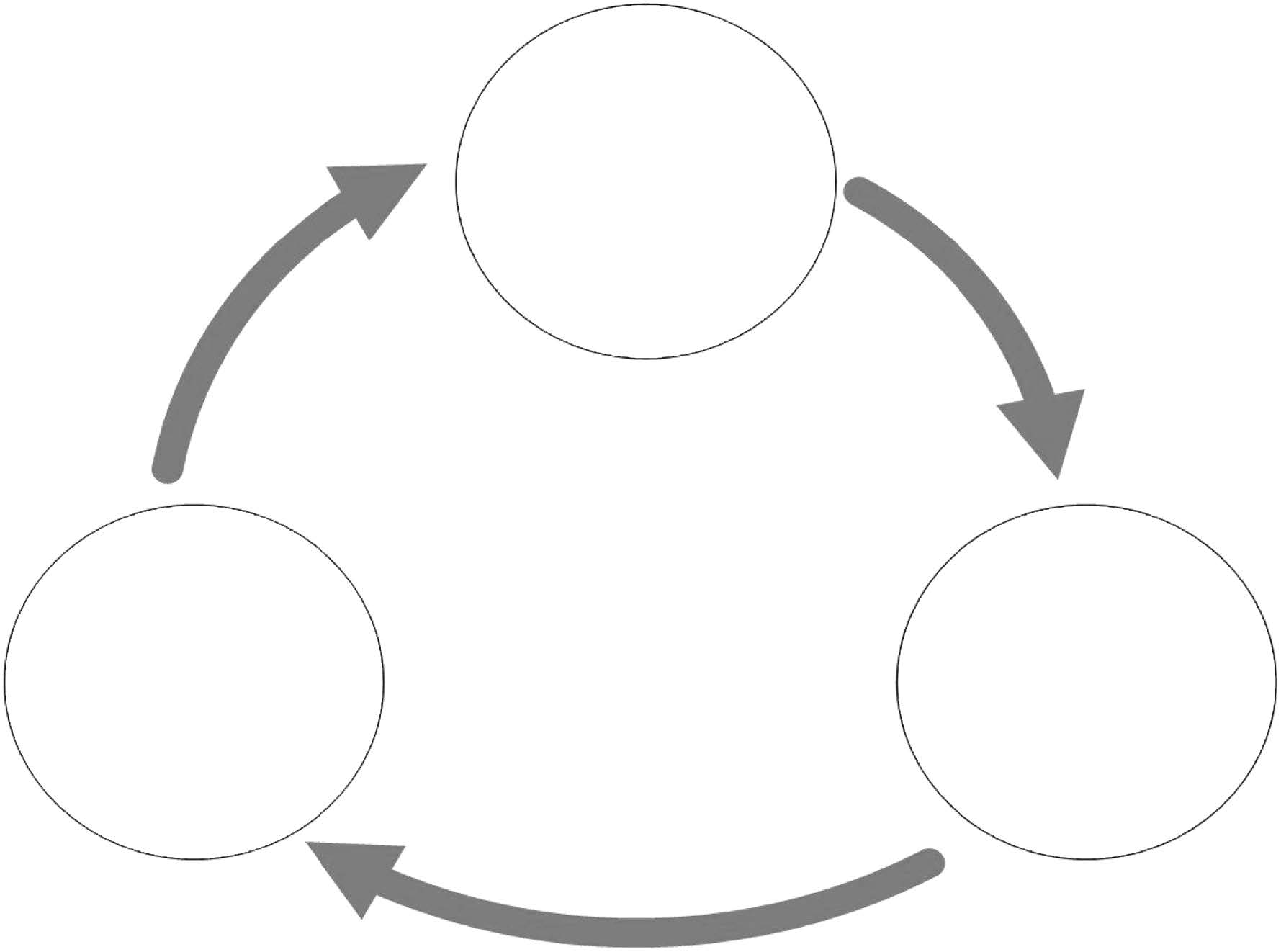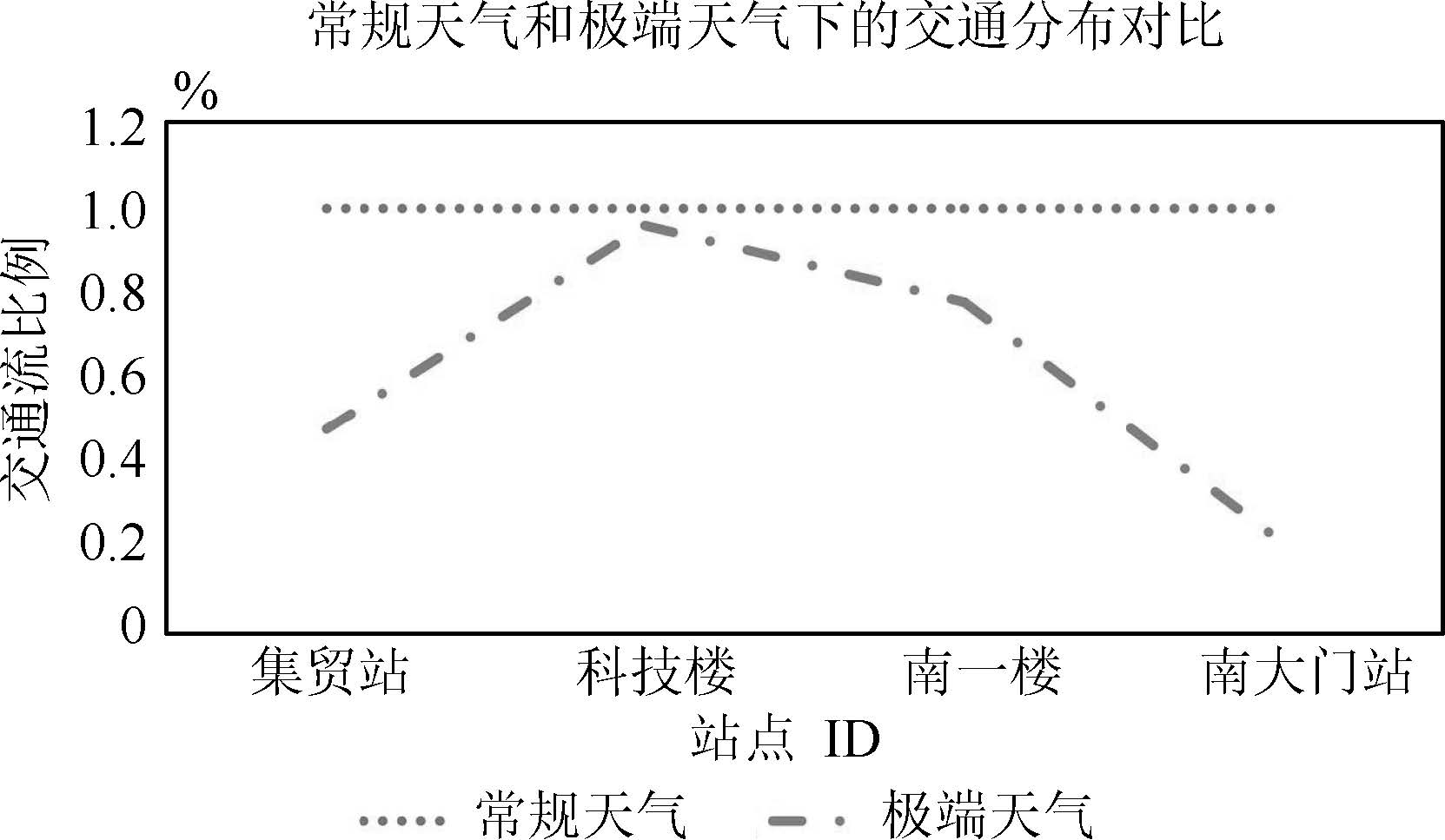-
摘要: 一般来说,用于交通需求预测的数学模型往往缺少对出行个体微观水平上的异质性和可变交通情景的考虑.针对这些问题,本文提出了一种基于计算实验的公共交通需求预测方法.该方法主要由交通调查、基于Agent的人工交通系统(Artificial transportation system,ATS)和计算实验3部分组成.在出行个体Agent建模中引入BDI(Belief-desire-intention)模型,来推演各出行个体在出行过程中对各交通选择的决策制定过程.在人工交通系统的基础上,可以设计并执行大量的计算实验来进行交通需求预测.本文通过基于校车系统的一系列交通调查和计算实验验证了该方法的可行性和优越性,并针对各种不同交通情景进行了交通分布预测和交通方式划分预测.
-
关键词:
- 计算实验 /
- 交通需求预测 /
- 基于Agent的建模与仿真 /
- BDI(Belief-desire-intention)模型
Abstract: Mathematical models used in traffic demand forecast usually do not consider individual heterogeneity at the micro level and changeable traffic scenes. To solve these issues, a forecast method based on computational experiment that is composed of traffic survey, agent-based artificial transportation system (ATS), and computational experiments is proposed. A BDI (belief-desire-intention) modeling method is introduced in individual passenger agent to deduce each passenger's decision-making process of traffic selection. By using a series of computational experiments on ATS, a case study on a school bus system is conducted to validate the feasibility and superiority of our method. Several computational experiments are conducted to predict the traffic distribution and the traffic mode choice under different traffic scenarios. -
表 1 具有不同属性的出行个体分布
Table 1 Distribution of passengers with different properties
个体属性 属性值 分布比例(%) 性别 男 85.7 女 14.3 男生中代步工具的拥有情况 有 72.0 无 28.0 女生中代步工具的拥有情况 有 46.0 无 54.0 起始站点 韵苑站 100.0 目的站点 科技楼 25.7 南一楼 74.3 表 2 各类个体可接受队长临界值分布 (%)
Table 2 Distribution of max queue length passengers accepted(%)

10人 20人 30人 40人 50人 男生且有自行车 11 19 28 20 22 男生且无自行车 3 13 26 24 34 女生且有自行车 0 14 41 17 28 女生且无自行车 0 9 15 20 56 表 3 各类个体乘坐校车的概率分布 (%)
Table 3 Probability of passengers taking school bus (%)
个体属性 常规天气 极端天气 男生且有自行车 14 69 男生且无自行车 100 100 女生且有自行车 29 97 女生且无自行车 100 100 表 4 规则库中的部分规则
Table 4 Part of the rules in rule base
默认交通方式为“步行” IF 职业=“学生”& 性别=“女”& 车辆拥有情况=“无自行车”THEN GOTO 规则1»6 规则1 IF 天气=“温和”& 途经站点数< 3 THEN 交通方式=“步行” 规则2 IF 天气=“温和”& 途经站点数¸ 3&站点队长· (最大可接受队长) THEN 交通方式=“校车” 规则3 IF 天气=“温和”& 途经站点数¸ 3&站点队长> (最大可接受队长) THEN 交通方式=“步行” 规则4 IF 天气=“极端”& 途经站点数< 3 THEN 交通方式=“步行” 规则5 IF 天气=“极端”& 途经站点数¸ 3&站点队长· (最大可接受队长) THEN 交通方式=“校车” 规则6 IF 天气=“极端”& 途经站点数¸ 3&站点队长> (最大可接受队长) THEN 交通方式=“步行” IF 职业=“学生”& 性别=“女”& 车辆拥有情况=“有自行车”THEN GOTO 规则7»12 规则7 IF 天气=“温和”& 途经站点数<3 THEN 交通方式=“自行车”(83 %) 或“步行”(17 %) 规则8 IF 天气=“温和”& 途经站点数¸ 3&站点队长· (最大可接受队长) THEN 交通方式=“自行车”(71 %) 或“校车”(29 %) 规则9 IF 天气=“温和”& 途经站点数¸ 3&站点队长> (最大可接受队长) THEN 交通方式=“校车” 规则10 IF 天气=“极端”& 途经站点数<3 THEN 交通方式=“自行车”(52 %) 或“步行”(48 %) 规则11 IF 天气=“极端”& 途经站点数¸ 3&站点队长· (最大可接受队长) THEN 交通方式=“自行车”(3 %) 或“校车”(97 %) 规则12 IF 天气=“极端”& 途经站点数¸ 3&站点队长>(最大可接受队长) THEN 交通方式=“自行车” 表 5 4次实验中的预测交通流和实际交通流
Table 5 Predicted traffic flow and real traffic flow in four experiments
交通流 实验1 实验2 实验3 实验4 韵苑站至科技楼的预测交通流 31 3 46 39 韵苑站至科技楼的实际交通流 30 3 42 36 韵苑站至南一楼的预测交通流 108 103 94 71 韵苑站至南一楼的实际交通流 104 101 92 75 表 6 预测交通流的误差分析 (%)
Table 6 Error of predicted traffic flow (%)
预测交通流的误差 实验1 实验2 实验3 实验4 韵苑站至科技楼 3.33 0 9.53 8.33 韵苑站至南一楼 3.85 1.98 2.17 5.33 表 7 常规天气和极端天气时的交通分布数据
Table 7 Traffic flow under normal weather and abnormal weather
集贸站 科技楼 南一楼 南大门站 常规天气 50 354 1824 523 极端天气 24 341 1430 112 表 8 常规工作日和考试周工作日的交通分布数据
Table 8 Traffic flow under normal weekday and weekday in exam week
集贸站 科技楼 南一楼 南大门站 常规工作日 50 354 1824 523 考试周工作日 63 18 2710 344 表 9 不同校车数量下各交通方式的交通流分担数据
Table 9 Traffic flow of each traffic mode under different number of school bus
校车数量 校车 自行车 步行 1 203 1116 390 2 327 1150 268 3 390 1161 174 4 469 1114 120 5 504 1116 76 6 506 1134 71 7 500 1117 80 -
[1] Wang F Y, Tang S M. A framework for artificial transportation systems:from computer simulations to computational experiments. In:Proceedings of the 2005 IEEE Intelligent Transportation Systems. Vienna, Austria:IEEE, 2005. 1130-1134 [2] 陈英武, 邢立宁, 王晖, 葛斌, 李沛, 赵青松. 网络环境下社会管理的组织行为建模与计算实验研究综述. 自动化学报, 2015, 41(3):462-474 http://www.aas.net.cn/CN/abstract/abstract18625.shtmlChen Ying-Wu, Xing Li-Ning, Wang Hui, Ge Bin, Li Pei, Zhao Qing-Song. Review on organizational behavior modeling and computational experiments of social management under network environments. Acta Automatica Sinica, 2015, 41(3):462-474 http://www.aas.net.cn/CN/abstract/abstract18625.shtml [3] 袁勇, 王飞跃. 不完全信息议价博弈的序贯均衡分析与计算实验. 自动化学报, 2015, 42(5):724-734 http://www.cnki.com.cn/Article/CJFDTOTAL-MOTO201605012.htmYuan Yong, Wang Fei-Yue. Sequential equilibrium analysis and computational experiments of a bargaining game with incomplete information. Acta Automatica Sinica, 2015, 42(5):724-734 http://www.cnki.com.cn/Article/CJFDTOTAL-MOTO201605012.htm [4] 胡玉玲, 王飞跃, 刘希未. 基于ACP方法的高层建筑火灾中人员疏散策略研究. 自动化学报, 2014, 40(2):185-196 http://www.aas.net.cn/CN/abstract/abstract18281.shtmlHu Yu-Ling, Wang Fei-Yue, Liu Xi-Wei. ACP-based research on evacuation strategies for high-rise building fire. Acta Automatica Sinica, 2014, 40(2):185-196 http://www.aas.net.cn/CN/abstract/abstract18281.shtml [5] Wang F Y. Parallel control and management for intelligent transportation systems:concepts, architectures, and applications. IEEE Transactions on Intelligent Transportation Systems, 2010, 11(3):630-638 doi: 10.1109/TITS.2010.2060218 [6] Wang F Y. Toward a paradigm shift in social computing:the ACP approach. IEEE Intelligent Systems, 2007, 22(5):65-67 doi: 10.1109/MIS.2007.4338496 [7] 唐少虎, 刘小明, 陈兆盟, 张金金. 基于计算实验的城市道路行程时间预测与建模. 自动化学报, 2015, 41(8):1516-1527 http://www.aas.net.cn/CN/abstract/abstract18725.shtmlTang Shao-Hu, Liu Xiao-Ming, Chen Zhao-Meng, Zhang Jin-Jin. Urban road travel time prediction and modeling via computational experiments. Acta Automatica Sinica, 2015, 41(8):1516-1527 http://www.aas.net.cn/CN/abstract/abstract18725.shtml [8] 刘小明, 李正熙. 城市客运交通枢纽平行系统体系研究. 自动化学报, 2014, 40(12):2756-2765 http://www.aas.net.cn/CN/abstract/abstract18555.shtmlLiu Xiao-Ming, Li Zheng-Xi. Parallel systems for urban passenger transport hub. Acta Automatica Sinica, 2014, 40(12):2756-2765 http://www.aas.net.cn/CN/abstract/abstract18555.shtml [9] 孙绪彬, 董海荣, 宁滨, 高童欣, 孔庆杰. 基于ACP方法的应急疏散系统研究. 自动化学报, 2014, 40(1):16-23 http://www.cnki.com.cn/Article/CJFDTOTAL-MOTO201401003.htmSun Xu-Bin, Dong Hai-Rong, Ning Bin, Gao Tong-Xin, Kong Qing-Jie. ACP-based emergency evacuation system. Acta Automatica Sinica, 2014, 40(1):16-23 http://www.cnki.com.cn/Article/CJFDTOTAL-MOTO201401003.htm [10] Li J Y, Tang S M, Wang X Q, Duan W, Wang F Y. Growing artificial transportation systems:a rule-based iterative design process. IEEE Transactions on Intelligent Transportation Systems, 2011, 12(2):322-333 doi: 10.1109/TITS.2011.2110646 [11] He W, Chen G S, Tang S M, Li D Y, Guo M, Zhang T L, Jia P, Jin F. A scaled-down traffic system based on autonomous vehicles:a new experimental system for ITS research. In:Proceedings of the 15th International IEEE Conference on Intelligent Transportation Systems. Anchorage, Alaska, USA:IEEE, 2012. 13-18 [12] Wahle J, Schreckenberg M. A multi-agent system for on-line simulations based on real-world traffic data. In:Proceedings of the 34th Annual Hawaii International Conference on System Sciences. Maui, HI, USA:IEEE, 2001. [13] Dong X S, Liu Y, Xiong G, Zhu F H, Li Z J. Parallel transportation management and control system for subway systems based on ACP approach. In:Proceedings of the 17th International IEEE Conference on Intelligent Transportation Systems (ITSC). Qingdao, China:IEEE, 2014. 2906-2911 [14] Ning B, Tang T, Dong H R, Wen D, Liu D R, Gao S G, Wang J. An introduction to parallel control and management for high-speed railway systems. IEEE Transactions on Intelligent Transportation Systems, 2011, 12(4):1473-1484 doi: 10.1109/TITS.2011.2159789 [15] Zhu F H, Chen S H, Lv Y S, Ye P J, Xiong G, Dong X S. Parallel public transport system and its application in the evacuation of large-scale activities. In:Proceedings of the 15th International IEEE Conference on Intelligent Transportation Systems. Anchorage, Alaska, USA:IEEE, 2012. 102-107 [16] Dong H R, Ning B, Chen Y, Sun X B, Wen D, Hu Y L, Ouyang R H. Emergency management of urban rail transportation based on parallel systems. IEEE Transactions on Intelligent Transportation Systems, 2013, 14(2):627-637 doi: 10.1109/TITS.2012.2228260 [17] Li L F, Zhang H, Wang X F, Lu W, Mu Z P. Urban transit coordination using an artificial transportation system. IEEE Transactions on Intelligent Transportation Systems, 2011, 12(2):374-383 doi: 10.1109/TITS.2010.2060195 [18] 潘星晨, 汪云峰. 应急响应环境下基于BDI模型的Agent结构研究. 微型机与应用, 2011, 30(5):81-84 http://www.cnki.com.cn/Article/CJFDTOTAL-WXJY201105029.htmPan Xing-Chen, Wang Yun-Feng. Research of agent architecture based on BDI under emergency response. Microcomputer and Its Applications, 2011, 30(5):81-84 http://www.cnki.com.cn/Article/CJFDTOTAL-WXJY201105029.htm [19] 李圆. 基于BDI Agent的个体推理和多部门应急协商方法及应用[硕士学位论文], 华中科技大学, 中国, 2012Li Yuan. Research and Application of BDI Agent based Reasoning and Multi-Department Emergency Negotiation[Master dissertation], Huazhong University of Science and Technology, China, 2012 [20] Miao Q H, Zhu F H, Lv Y S, Cheng C J, Chen C, Qiu X G. A game-engine-based platform for modeling and computing artificial transportation systems. IEEE Transactions on Intelligent Transportation Systems, 2011, 12(2):343-353 doi: 10.1109/TITS.2010.2103400 -





 下载:
下载:














